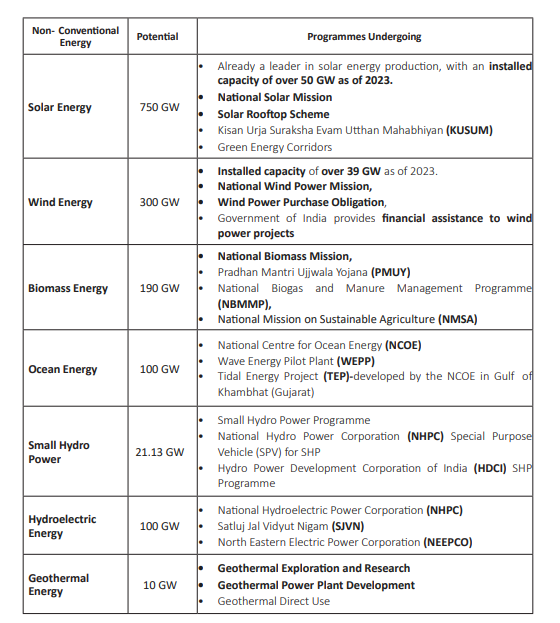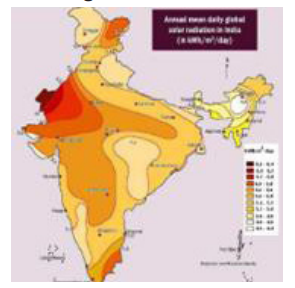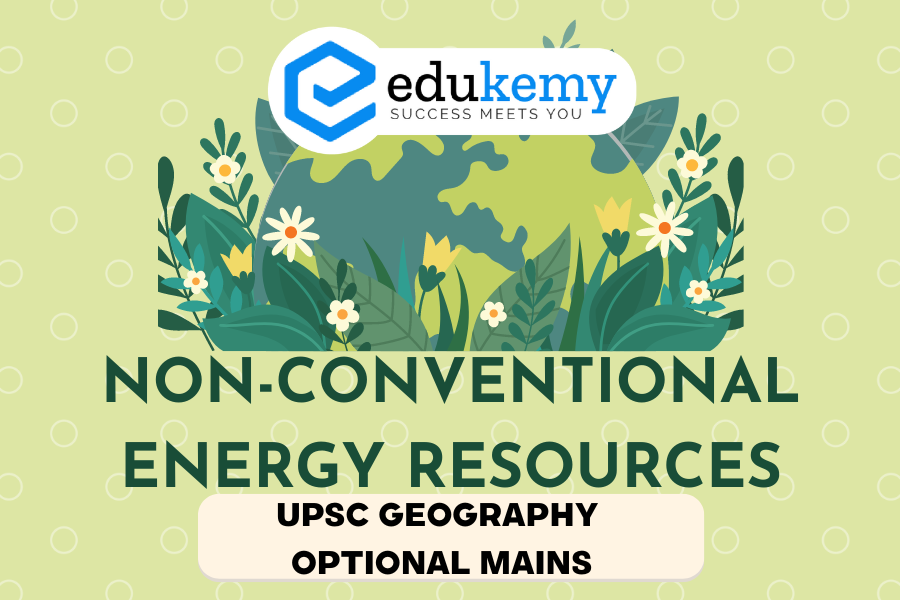
India’s geographical positioning offers a diverse landscape that presents an extensive canvas for the exploration and utilization of non-conventional energy resources. Nestled between the Tropic of Cancer and the Equator, India experiences varying climatic conditions, ranging from arid deserts to lush forests and coastal regions. This geographical diversity translates into a rich repository of renewable energy potential, making it an ideal ground for harnessing non-conventional sources. The country has been actively tapping into these resources to meet its escalating energy demands while addressing environmental concerns. Examples of such endeavors include the harnessing of solar energy in the arid regions of Rajasthan, wind power generation along the coastline, and the exploration of bioenergy from diverse agricultural residues. India’s strategic geographical location thus positions it as a promising arena for the sustainable development of non-conventional energy resources, fostering both energy security and environmental sustainability.
Answer
India’s diverse climate, terrain, and geography allow for the development and utilization of various forms of non-conventional energy. The total non-conventional energy potential in India is estimated to be over 900 GW, according to the Indian Ministry of New and Renewable Energy.

Non-Conventional Energy Potential and Programmes In INDIA


Locational aspects of India provide scope for harnessing non-conventional energy resources in various ways such as:
- Tropical and semi tropical location (Between 8.4 degrees north latitude to about 37.6 degrees north latitude)
- Receives a lot of sunlight throughout the year, makes it ideal for development of solar energy eg. The Bhadla Solar Park (Rajasthan) world’s largest single- location solar power plant, capacity of 2.2 GW.
- Long coastline and a number of hilly regions
- Ideal locations for wind turbines and Wind Energy eg. The Muppandal Wind Farm in Tamil Nadu
- Large agricultural producer
- lot of biomass resources
- Biomass energy eg. The Neyveli Lignite Corporation in Tamil Nadu has a biomass power plant capacity-1,000 MW.
- Coastal Location (7500 Km Coastline)
- Ideal for harnessing Ocean Energy eg. The Wave Energy Project in Kerala is India’s first wave energy project, capacity-1 MW
- Tidal Energy potential is around 8,000 MW.
- Only one operational tidal power plant in the country, the 3.75 MW
Durgaduani tidal power plant in West Bengal
- Location at the junction of plate margins-Extensive Himalayas
- Perineal rivers and long steep courses with numerous waterfalls are ideal locations for utilising hydroelectric energy e.g. The Tehri Dam in Uttarakhand is the highest dam in India, with a capacity of 1,000 MW.
- Located on a tectonic plate boundary
- It is geologically active
- Geothermal Energy eg. Puga Valley (Ladakh), Manikaran (HP)Tattapani (HP)
- Numerous small rivers and rivulets
- There are over 10,000 small rivers in India
- Well-suited for small hydropower (SHP) generation.
- SHP plants are typically defined as those with a capacity of up to 25 MW, and they can be installed on a variety of waterways, including rivers, streams, and canals.
Non-conventional energy resources can help to reduce greenhouse gas emissions by up to 80% compared to fossil fuels, thus are essential to fulfill sustainable development targets and to combat climate change.
In case you still have your doubts, contact us on 9811333901.
For UPSC Prelims Resources, Click here
For Daily Updates and Study Material:
Join our Telegram Channel – Edukemy for IAS
- 1. Learn through Videos – here
- 2. Be Exam Ready by Practicing Daily MCQs – here
- 3. Daily Newsletter – Get all your Current Affairs Covered – here
- 4. Mains Answer Writing Practice – here

